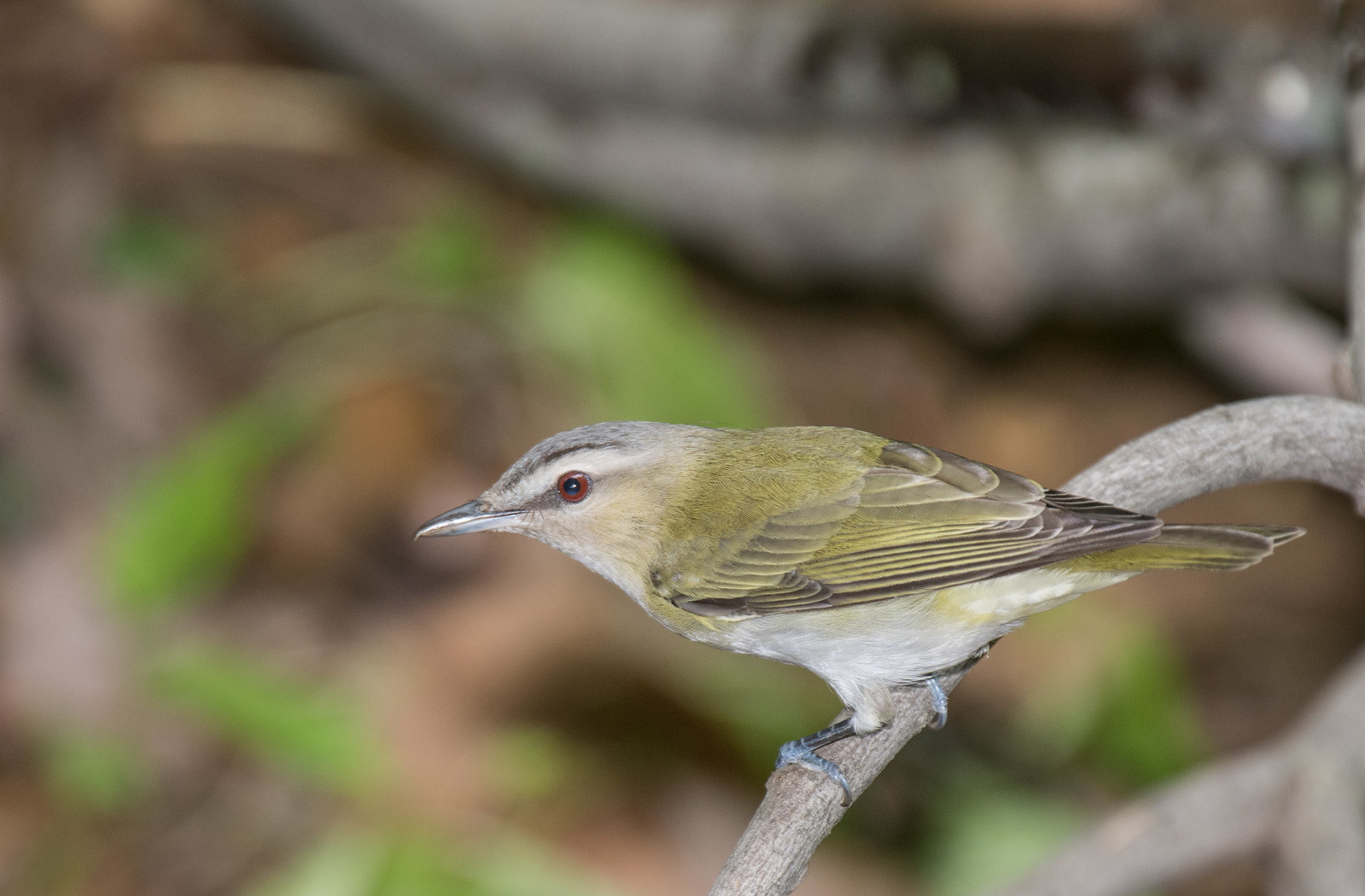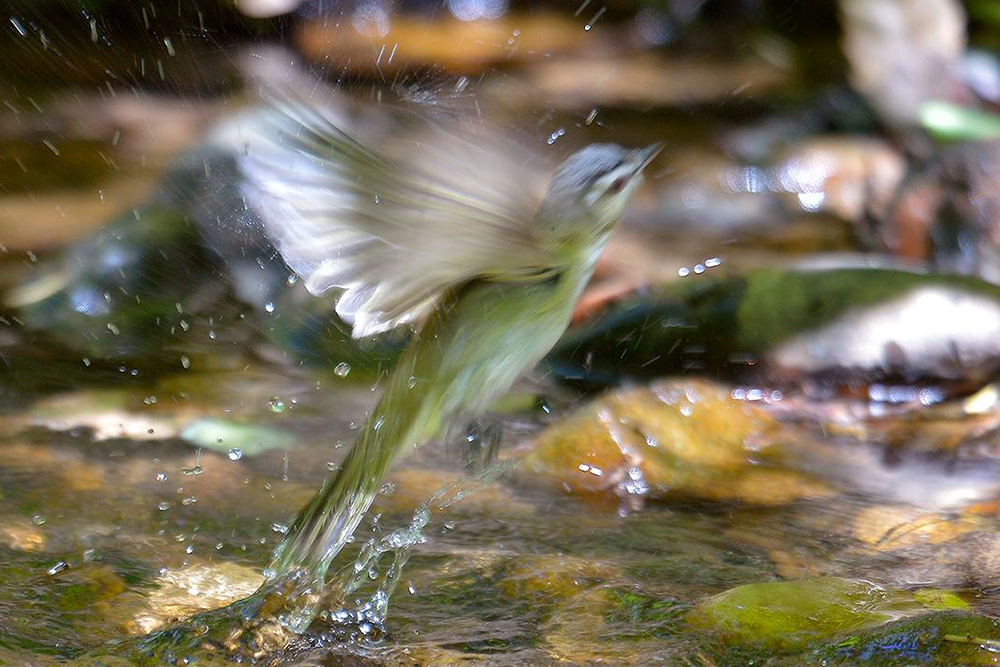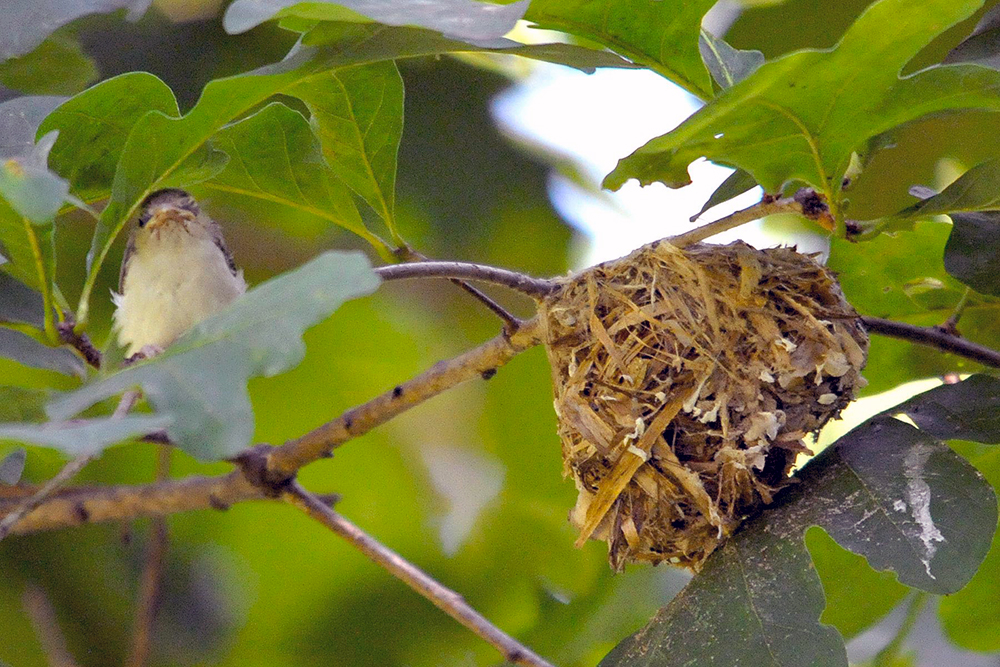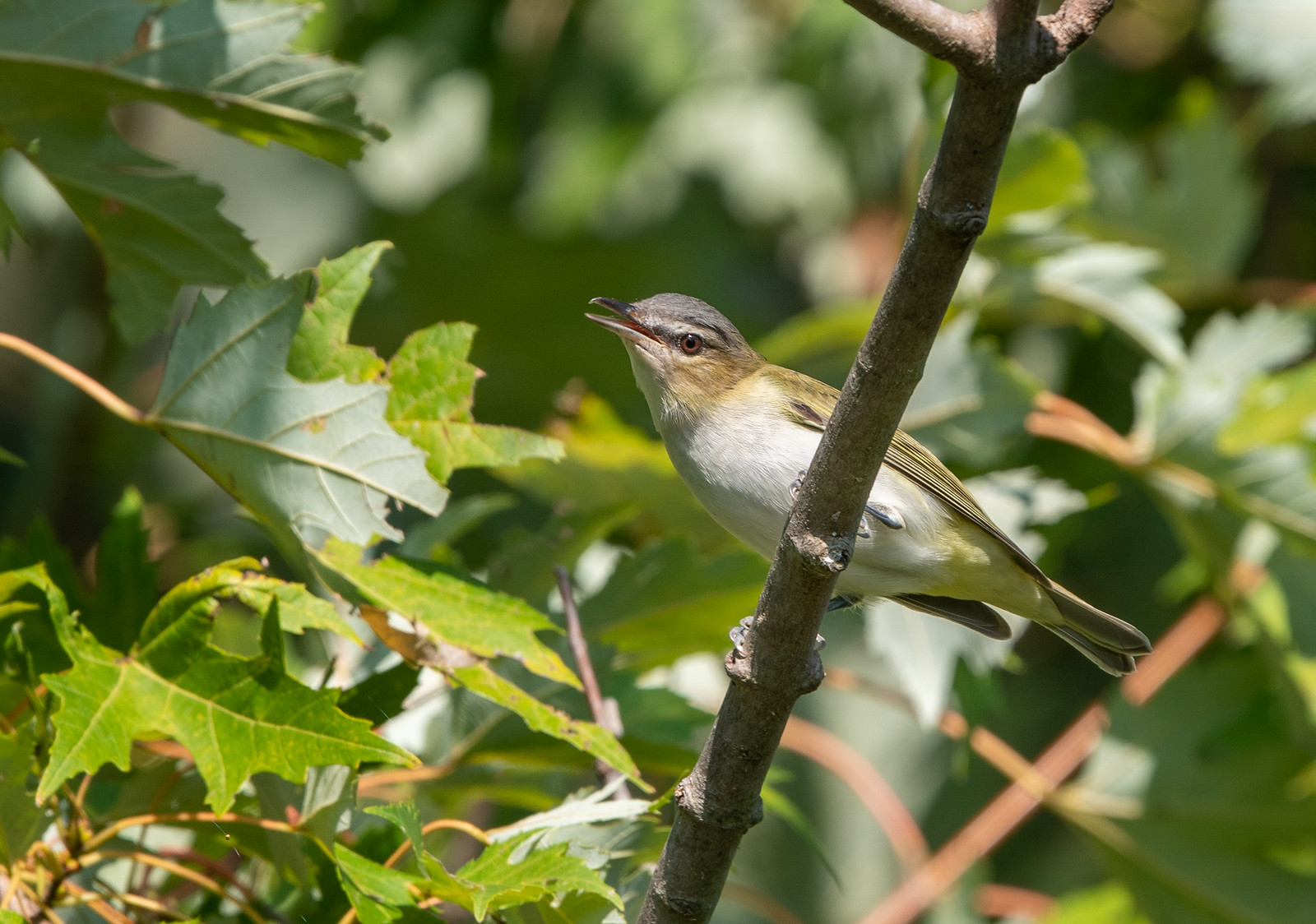| Early Spring Date: | April 16 |
| Late Spring Date: | June 1 |
| Best Dates to See in Spring: | April 25 - May 29 |
| Has Nested in Park | |
Spring: The Red-eyed Vireo is the most common vireo seen at Monticello by a wide margin. Large numbers pass through during the first three weeks in May, and in some years, they have nested in the park.
Fall: A lot of Red-eyed Vireos pass through Monticello during fall migration. They are present through most of September.Where to See Them in the Park
Red-eyed Vireos sing high in the trees, but they often come down to where people can see them more easily.
Physical Description

Red-eyed Vireos are olive birds with a gray cap and a red eye. They do not have wingbars. They have a broad white line over their eye, and the line has black borders. The flanks and undertail are yellow-green. The sexes look similar. Plumage does not vary between the spring and fall, but birds of both sexes in each season can look either brighter or duller. Compared to warblers, vireos are larger, have a larger and thicker bill, and do not move as quickly.

Red-eyed Vireos rarely go into the stream to bathe. They prefer to wet their feathers by dipping into the stream and coming out immediately.

Red-eyed Vireos have nested at Monticello Park. Red-eyed Vireos build a deep cupped structure and put twigs, vines, rootlets, and other materials on the outside.
Vocalizations

The Red-eyed Vireo is one of the most persistent singers in the bird world. A male on territory will sometimes sing his monotonous Here am I. Where are you? song from sunrise to sunset. The call note is whiny and sounds like a single whiny note of a Gray Catbird.
Hear the vocalizations of the Red-eyed Vireo.
Notes
While the song of the Red-eyed Vireo might sound monotonous, it includes variations that an untrained ear usually cannot detect. Someone once counted more than 22,000 songs sung by a single Red-eyed Vireo during one day. Because of the seemingly non-stop vocalizing, some people in the 1800s dubbed the Red-eyed Vireo the preacher bird. The ornithologist Bradford Torrey commented: "The red-eye's eloquence was never very persuasive to my ear. Its short sentences, its tiresome upward inflections, its everlasting repetitiousness, and its sharp, querulous tone long since became to me an old story; and I have always thought that whoever dubbed this vireo the 'preacher' could have had no very exalted opinion of the clergy".
Origin of Names
Common Names: Red-eyed from the red eye. Vireo is Latin for green.
Genus Name: Vireo means green.
Species Name: Olivaceus means olive-colored.
Red-eyed Vireo video footage
Return to the Index
